Uzbekistan: 2 Amazing Cities on the Silk Road
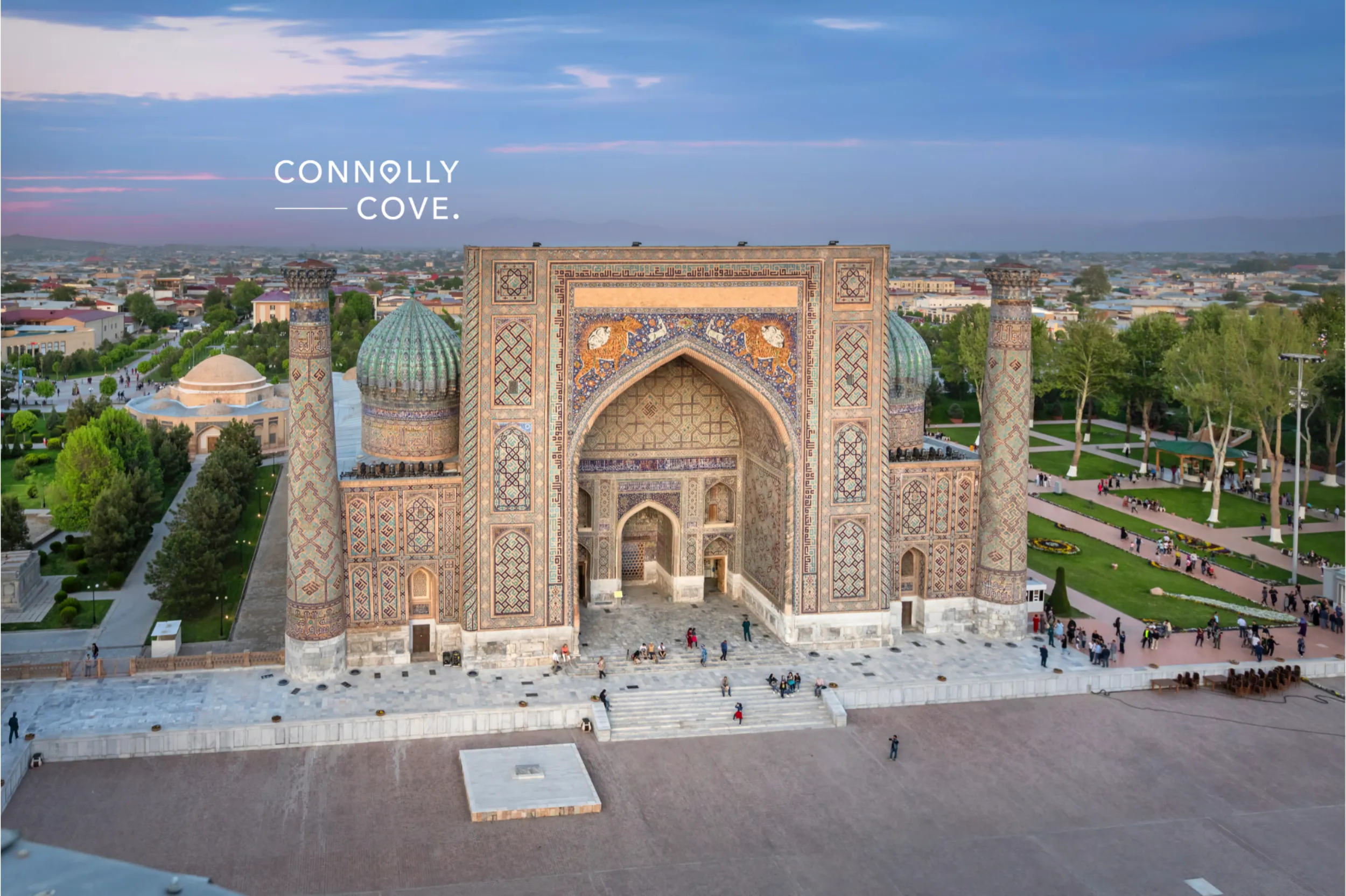
Updated On: April 17, 2024 by Marwa Abdel Moniem
How many steps are you willing to take back in history to explore the culture and beauty of a country and actually add it to your bucket list? Well, we can help you narrow down your choices by giving you some insight into Uzbekistan. Yup, you probably would have never thought about this country as a possible travel destination, let alone board a flight to this place in Central Asia.
A trip to Uzbekistan in the heart of Central Asia is guaranteed to strike you by surprise at how rich its heritage is. It will affectionately touch you with the warm hospitality of its people. Here is all you need to know before you go!
Table of Contents
Warm Welcome Vibes
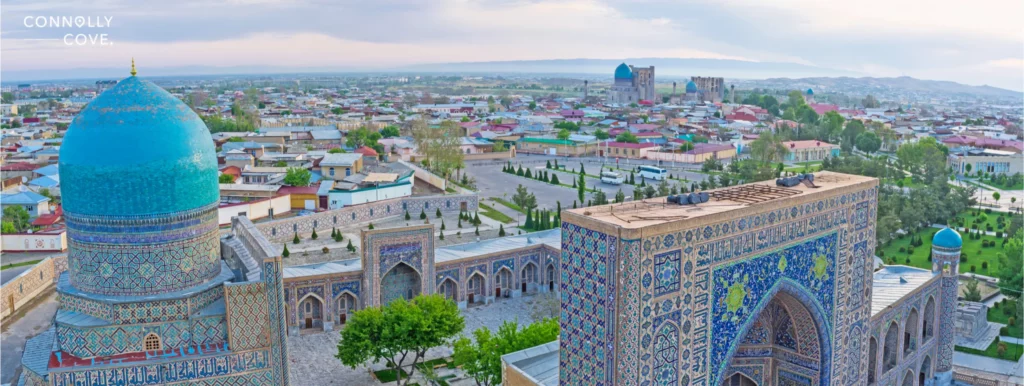
Mehtar-at, ichitar-at! This is a fundamental aspect of their culture —”Come as a guest, leave as a friend”. When you visit Uzbekistan, you will know that its true beauty lies in the open hearts of its people. What is better than a welcoming populace that adds joy to your journey in a foreign country?
Hospitality has been a hallmark of the Uzbek society for centuries. When you meet Uzbeks, you will often be greeted with a smile and a heartfelt “Assalomu alaykum,” which means “Peace be upon you.” This traditional greeting is a reflection of their friendly and peaceful nature.
Uzbeks also take great pride in hosting guests in their homes, which is a deeply rooted practice in the country. It is not uncommon for a stranger to be invited to a local’s house for a meal or a cup of tea. Uzbeks take their tea seriously, and it is natural to be offered this treat wherever you go. The tradition of offering tea is a gesture of goodwill in Uzbekistan.
The “open door” policy is another friendly feature among Uzbeks, who always welcome family, acquaintances and even absolute strangers to their homes anytime. You will feel like warmth and kindness are filling the air. This is one place that surely makes you feel at home when you are away from home.
Visitors to Uzbekistan often leave with not only beautiful memories of the country’s stunning architecture and landscapes but also with the warm embrace of its people firmly imprinted in their hearts.
Hospitality in Uzbekistan is as boundless as the steppe. May the warmth of Uzbek hospitality light your journey and guide your heart. Amen to that!
A Gem of Beauty in Central Asia
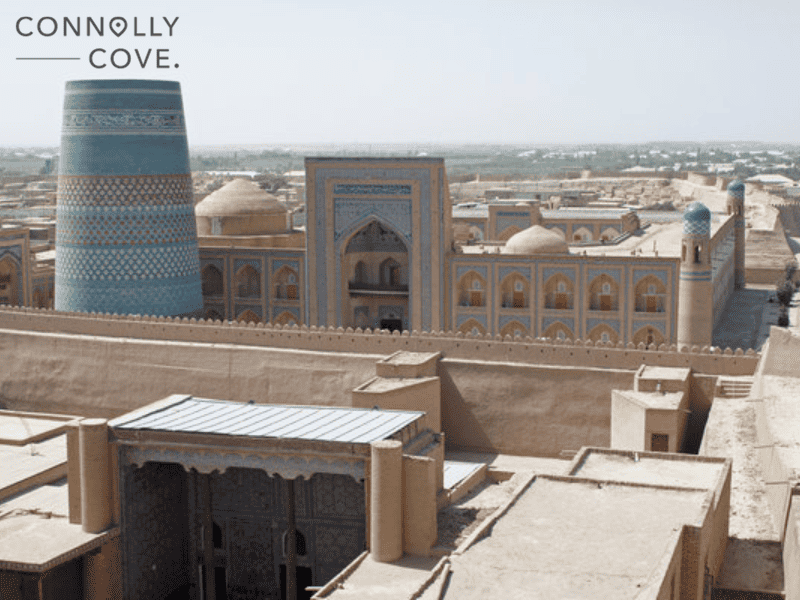
It is hard to decide where to start, especially if you are visiting a country that was once home to numerous ancient civilisations and its history is reflected in its awe-inspiring architectural sites. We are talking about various empires, including the Persian and Timurid. Of course, there are also the Silk Road civilisations. It is a long story, whose last chapter could be Uzbekistan’s independence from the Soviet Union in 1991.
In this article, we invite you to explore the historical and architectural depths of two Uzbek cities, namely Samarkand and Bukhara, which have many majestic sites that will take your breath away.
Silk Road Whispers in Samarkand!
Everything I have heard about the beauty of Samarkand is true, except that it is even more beautiful than I could have imagined.
Alexander the Great in 329 BC
Samarkand—also known as “Maracanda” in ancient times even before it was conquered by Alexander the Great—is a city with an illustrious past and a history that spans over 2,700 years, making it one of the oldest inhabited areas in Central Asia.
Samarkand has played a significant role in the development of trade, culture, and civilisation throughout the Silk Road era and beyond. Often referred to as the “Pearl of the Silk Road”, Samarkand is a living tapestry of antiquity that has rightly earned it recognition as a UNESCO World Heritage Site.
It was a vital stop along the ancient Silk Road that connected China with the Mediterranean. During the 14th and 15th centuries, Samarkand was the capital of the Timurid Empire, founded by conqueror Tamerlane whose era was one of remarkable cultural and architectural growth. We will give you an insider’s look into must-see places in Samarkand that you might find useful someday.
The Registan Square
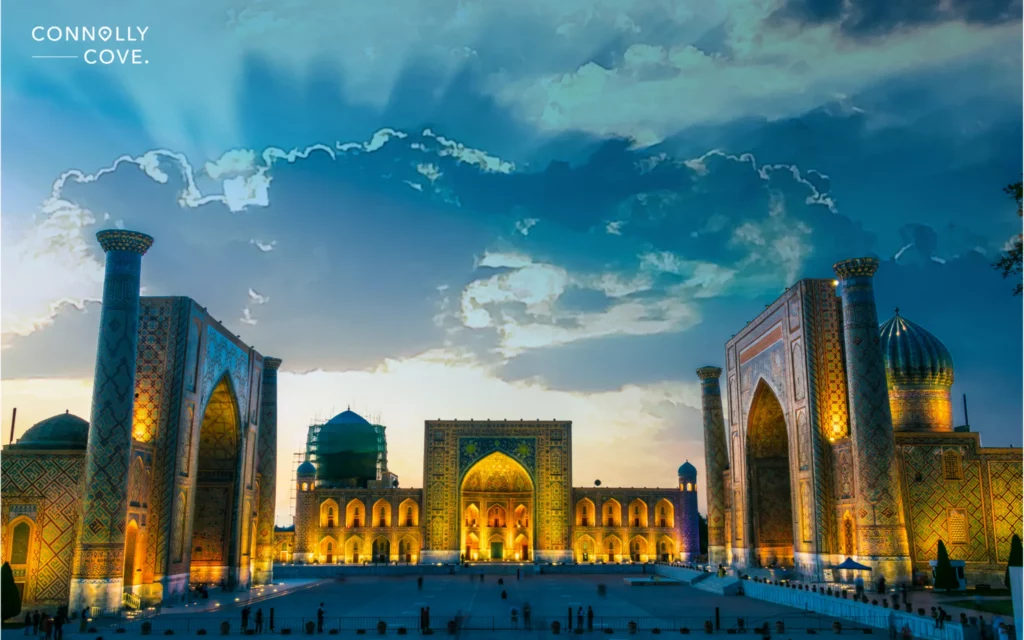
The Registan Square, with its stunning madrasas and mosques, is a prime example of Timurid architecture. It is found in the heart of Samarkand and is adorned with gorgeous tile work, intricate mosaics, and geometric patterns that reflect the finest examples of Islamic architecture.
Beyond its architectural beauty, the Registan Square has a rich cultural history. It was not only a centre for religious studies but also a hub for intellectual discourse, music, and art. It was a place where scholars and artisans gathered, contributing to the city’s reputation as a centre of learning and creativity.
The name “Registan” means “sandy place” in Persian. The square is surrounded by three magnificent madrasahs or Islamic schools, each an architectural masterpiece in its own right. The Ulugh Beg Madrasah, built by the great astronomer and ruler Ulugh Beg, dates back to the 15th century. The Tilya-Kori Madrasah, completed in the mid-17th century, features stunning blue tiles and gilded decorations. Lastly, the Sher-Dor Madrasah, constructed in the 17th century, is known for its twin tigers depicted on its exterior.
The Registan Square takes on a different charm at night when it is beautifully illuminated, creating a magical atmosphere. The play of light on the ornate facades adds to the square’s allure. Today, it remains a hub of cultural activities and events, continuing to connect the contemporary Uzbek culture with its rich historical roots.
The Registan is considered one of the most beautiful squares in the world and has been designated as a UNESCO World Heritage Site. It is a must-visit for history buffs and aesthetic enthusiasts.
The Gur-e-Amir Mausoleum
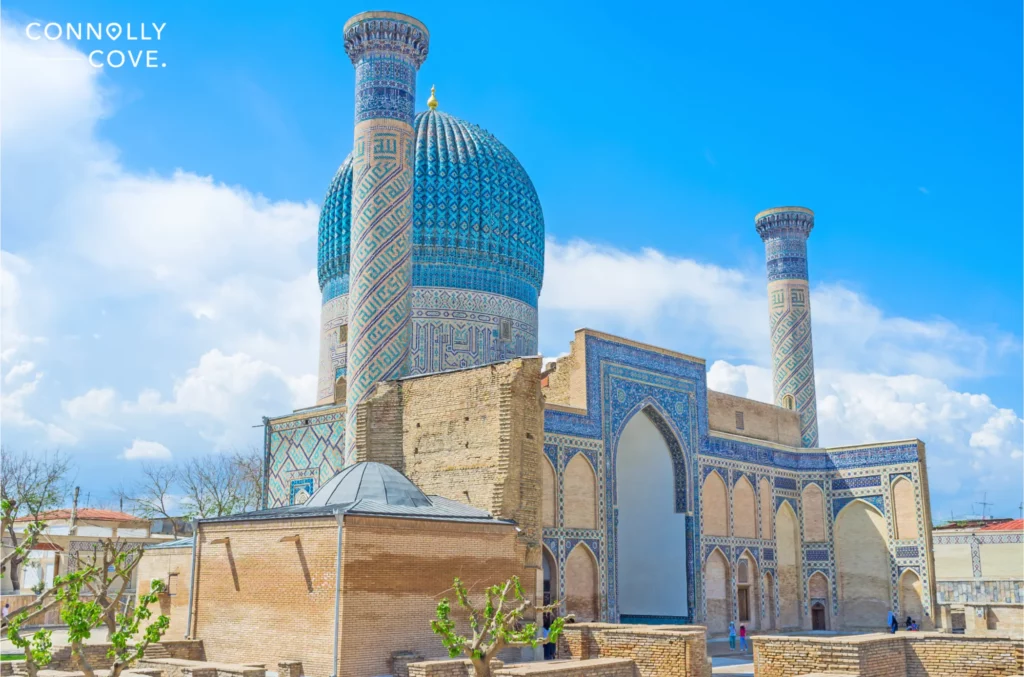
This is a mausoleum that preserves the legacy of one of history’s most influential conquerors —Tamerlane. It houses his tomb and is considered a masterpiece of Timurid architecture in Samarkand.
This mausoleum of the Turco-Mongol conqueror is celebrated for its stunning design, featuring a combination of Persian, Central Asian, and Islamic influences. Constructed during the 15th century, Gur-e-Amir’s exterior is decorated with sophisticated geometric patterns and calligraphy. Azure tiles are also part of the exterior look of the mausoleum and are particularly characteristic of the Timurid architectural style.
The central feature of Gur-e-Amir is its grand blue dome, which is double-layered, giving it a unique and impressive appearance. Inside, the interior is equally remarkable, with a large central chamber housing the tombs of Tamerlane, his two sons, and other descendants. The walls bear ornate tile work, and the ceiling is embellished with Islamic calligraphy.
The main attraction of Gur-e-Amir is the tomb of Tamerlane himself. His coffin is made of jade stone and is inscribed with Quranic verses. It is yet another UNESCO World Heritage Site in Samarkand.
The Bibi-Khanym Mosque
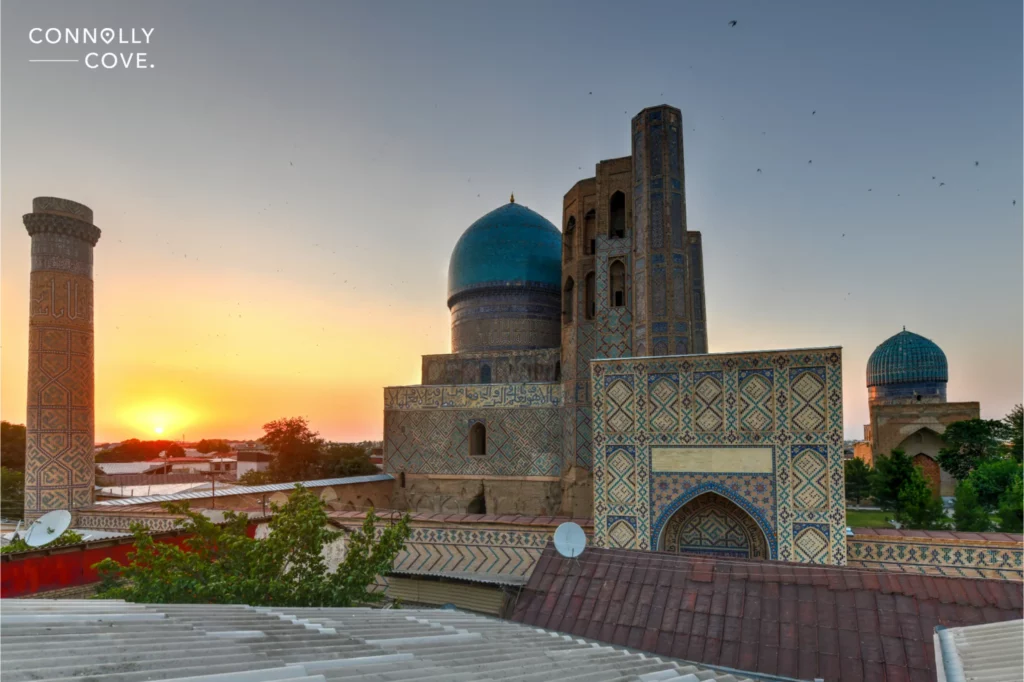
Named after Tamerlane’s favourite wife, this mosque is a massive structure with an incredible entrance and towering minarets. The construction of the Bibi-Khanym Mosque dates back to the 14th century when it was commissioned by Tamerlane.
Bibi-Khanym played a significant role in Tamerlane’s life and the rule of his empire. The mosque was designed and built by a team of skilled architects and artisans, making it an architectural masterpiece of its time.
Its grandeur and luxury are evident in the use of rare and exotic materials, including marble, onyx, and lapis lazuli. The mosque’s colossal entrance portal is a splendid example of Islamic architecture, featuring a large iwan (a vaulted hall) that is furnished with majestic blue domes and convoluted geometric patterns.
The primary prayer hall of the mosque is surrounded by gigantic walls covered with elaborate tile work, Arabic calligraphy, and floral motifs. Its historical importance is reflected in its inclusion on the UNESCO World Heritage List.
Bukhara: Another Important Stop on the Silk Road
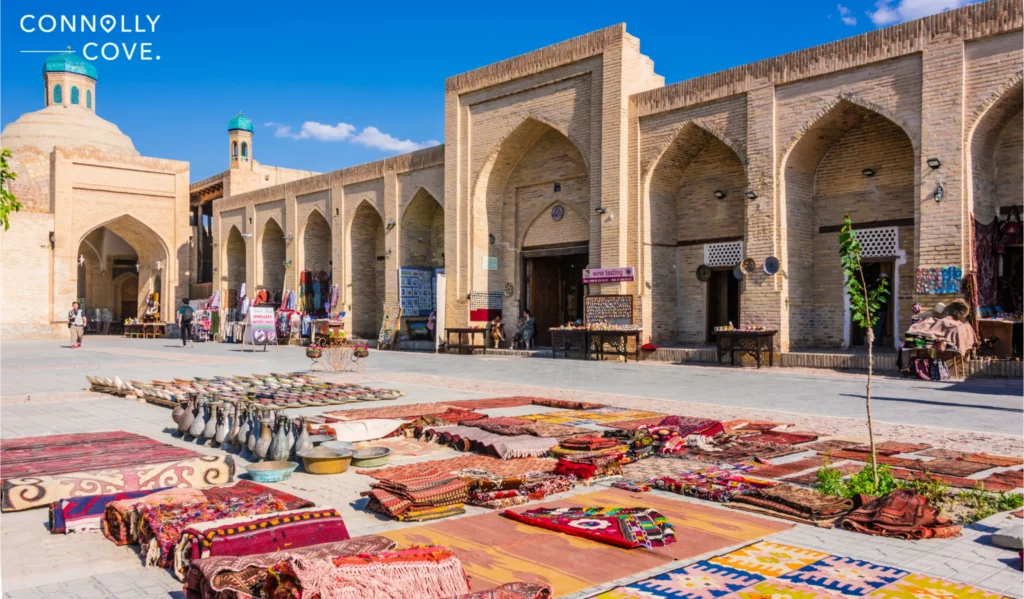
This city has played a vital role in cultural and economic exchange along the Silk Road. We are talking about centuries of palpable history that made Bukhara more like a living museum. No wonder it is perceived as a city where time stands still!
The timelessness of its architecture adds to the city’s allure and historical significance. With a history dating back over 2,000 years, Bukhara is filled with notable highlights. Its well-preserved architecture, vibrant bazaars, and welcoming atmosphere make it the go-to place for travellers interested in history, culture, and the arts. Here are some of the top attractions to visit in Bukhara!
The Ark of Bukhara
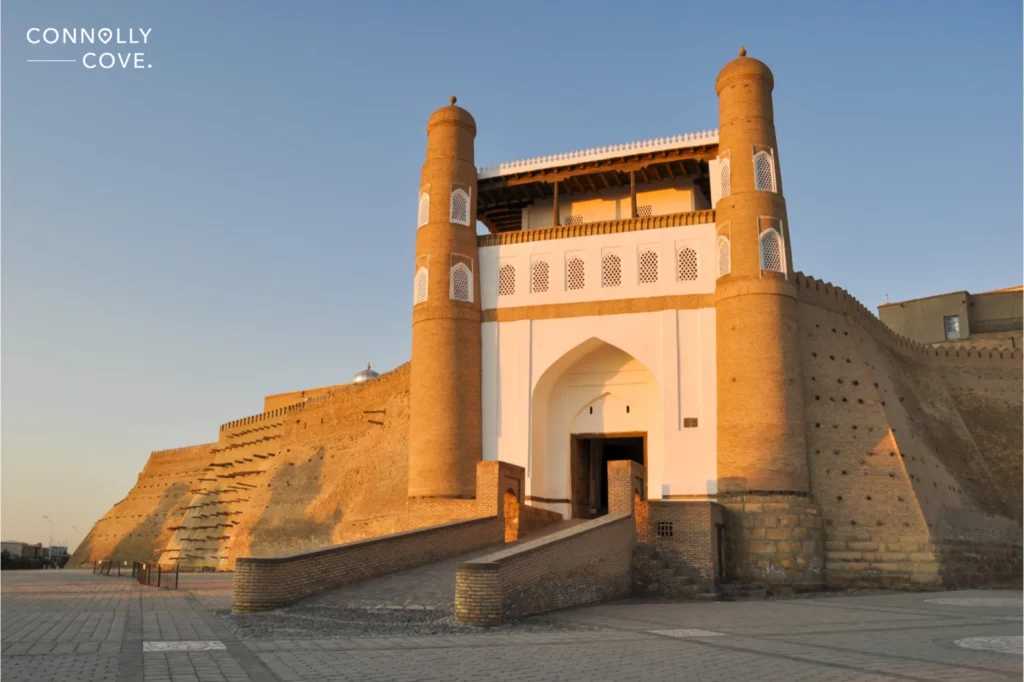
Now, this is what we call an architectural marvel. Located in the ancient city of Bukhara, this fortress is believed to have been initially constructed in the 5th century, before it was rebuilt during the Samanid Dynasty in the 9th and 10th centuries, and then during the Shaybanids Dynasty in the 16th century. This undoubtedly added to its historical and architectural value.
The Ark of Bukhara was once the residence of the Bukharan emirs. The high walls and defensive towers make it such an imposing edifice, which gives visitors a glimpse into the city’s past. The walls have complex mosaic work and Arabic calligraphy, which reflects the cultural and artistic influences of the Islamic world.
Within this fortress, you will find a maze of narrow winding streets, courtyards, mosques, and historical buildings. This is something so wow to explore! Some of the notable structures within the Ark include the Juma Mosque, the Throne Room, and the Emir’s quarters. The Juma Mosque is a striking example of Islamic architecture, featuring beautiful columns and a central courtyard.
The Ark of Bukhara stands as one of the most iconic and well-preserved historical sites in Central Asia. The Ark has been named a UNESCO World Heritage Site. You should not miss the Ark of Bukhara!
The Kalon Mosque and Minaret
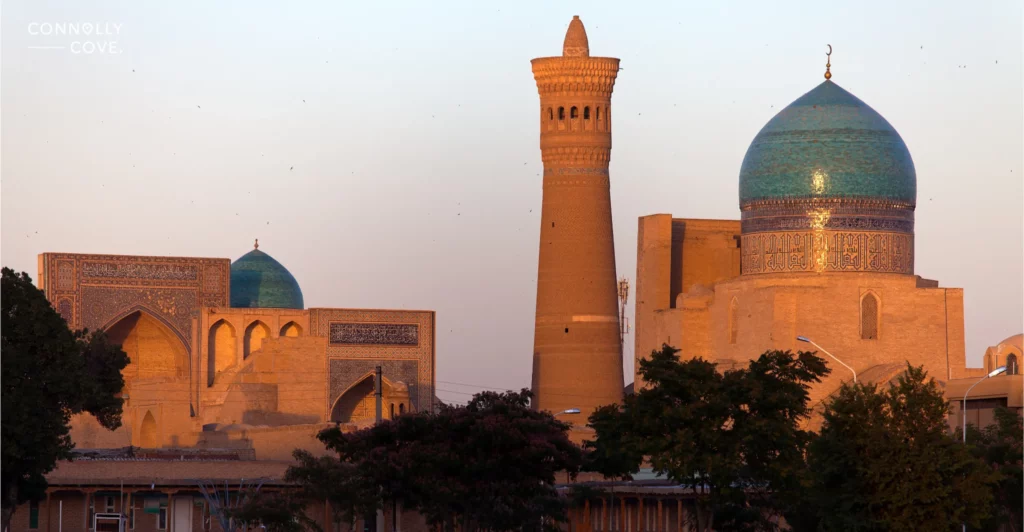
The Kalon Mosque is one of the largest in Central Asia, and its beautiful courtyard and precise tile work indeed show the magnificent Islamic heritage. The nearby Kalon Minaret is one of the tallest in the world and offers panoramic views of Bukhara.
The mosque and the minaret are two iconic architectural structures that, together, make up the “Historic Centre of Bukhara”—an essential UNESCO World Heritage Site.
The Kalon Minaret, often referred to as the “Great Minaret of Kalon”, was constructed in the 12th century during the Karakhanid Dynasty. Its most distinctive feature is its impressive height, standing at approximately 47 metres. It has a tapered cylindrical shape boasting meticulous brickwork. The minaret’s exterior features geometric and floral patterns in turquoise and blue.
One of the minaret’s primary functions is to serve as a call to prayer. At the top of the Kalon Minaret is a balcony from which the muezzin would recite the Islamic call to prayer.
The Kalon Mosque, also known as the “Friday Mosque”, is situated adjacent to the Kalon Minaret. The mosque’s construction dates back to the 16th century, during the reign of Shaybanid Khan Ubaydullah.
The Kalon Mosque showcases an amazing blend of architectural styles, with influences from both the Timurid and Persian designs. It features a large central courtyard with a grand entrance and an expansive prayer hall. The mosque is noted for its exhaustive tile work, vibrant mosaics, and ornate decorations, which include inscriptions from the Holy Quran. The Kalon Mosque and Minaret remain major symbols of Bukhara’s cultural identity.
Lyab-i Hauz
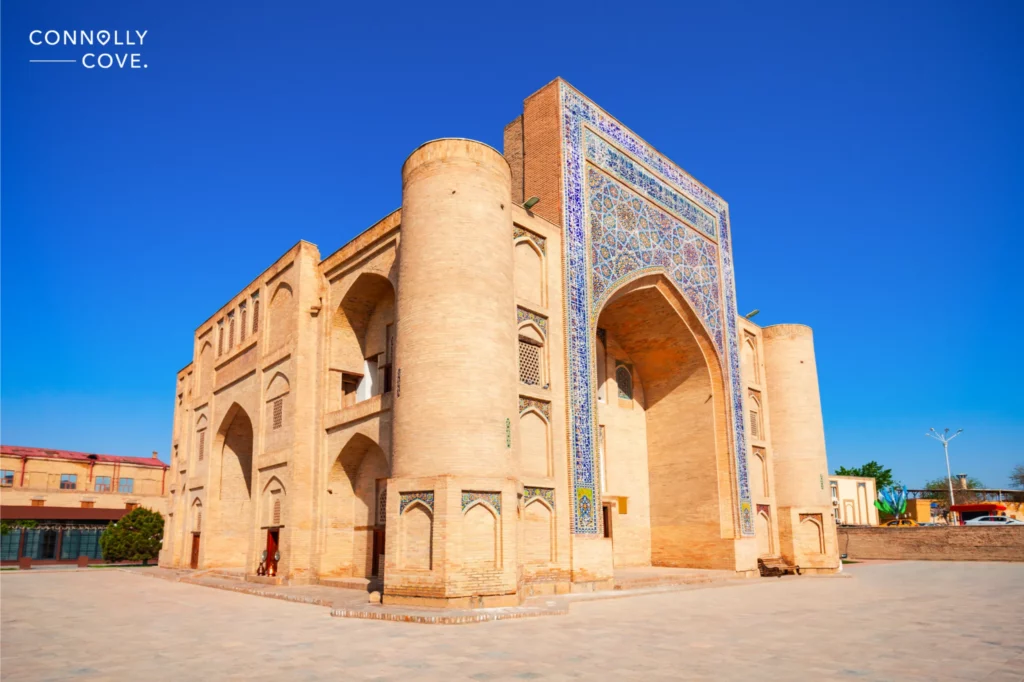
Seeking some break from such an overdose of history? We recommend that you stop by Lyab-i Hauz. This historic plaza is centred around a large pond and is surrounded by charming tea houses and shops. It is a popular gathering place that offers a relaxed atmosphere in the heart of Bukhara.
The name “Lyab-i Hauz” translates into “by the pond” in Persian, which aptly describes the primary feature of this charming area.
The Pool (Hauz) is the central attraction of this complex. It is a large rectangular pool, which serves as a focal point and is surrounded by mulberry trees, which provide such cool shade and is framed by beautifully adorned buildings on three of its sides.
The Nadir Divan-begi Madrasah, which dates back to the 17th century, is situated on one side of the pool. It has an astounding façade decorated with thorough tile work, and the entrance arch is an architectural masterpiece. In the past, this madrasah served as a place of learning and a centre for religious education.
The Kukeldash Madrasah is on the opposite side of the pool. It was built in the 16th century and is one of the largest madrasahs in Bukhara.
The Nadir Divan-begi Khanaka is a Sufi lodge located near the Nadir Divan-begi Madrasah. It was initially built as a place for Sufi mystics and dervishes to gather, meditate, and share their teachings.
Today, Lyab-i Hauz is bustling with modern life. The area surrounding the pool is dotted with cafes and souvenir shops. It is such a breathing space where the past and present coexist.
The Trading Domes
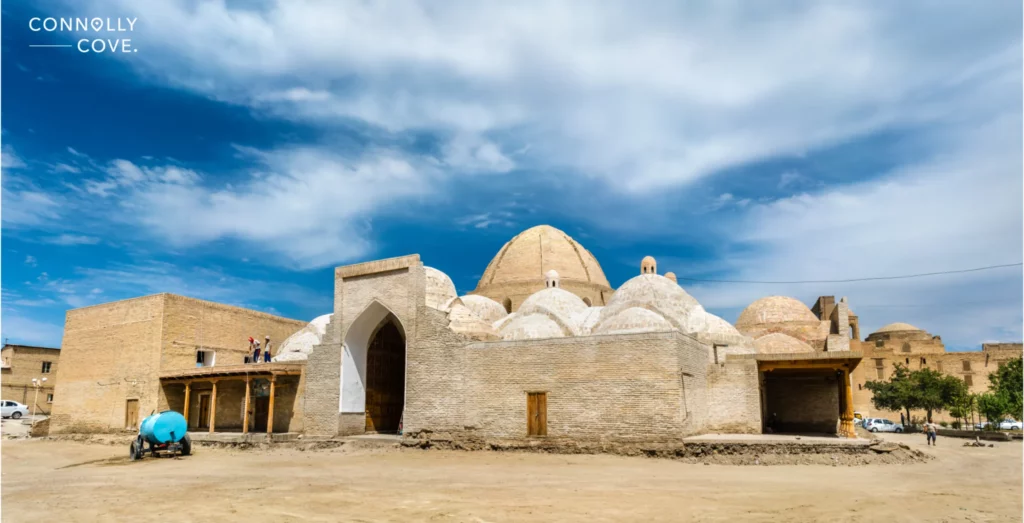
The trading domes in Bukhara are iconic architectural structures that were significant in the city’s history and continue to be vital cultural landmarks. The trading domes are a testament to Bukhara’s long and storied tradition of trade and commerce.
The domes were built during the 16th and 17th centuries to facilitate trade in a busy marketplace known as the “Toqi Sarrofon” or “Sarrofon Bazaar”. The domes served as a hub for merchants, traders, and craftsmen from various parts of the Silk Road, which passed through Bukhara, connecting East and West.
The trading domes in Bukhara typically consist of a series of interconnected, large, and ornate brick domes with exquisite tile work and patterns, adding to the aesthetic appeal of the marketplace.
Exploring the Treasures of Uzbekistan
Uzbekistan’s rich history and cultural heritage, combined with its warm hospitality, make it a captivating destination for travellers interested in exploring the Silk Road, ancient cities, and the natural beauty of Central Asia. Visiting Uzbekistan, be sure to immerse yourself in the local culture and discover the unique charm of this Central Asian gem. With its vibrant bazaars and intricately tiled monuments, Uzbekistan reveals itself as a hidden treasure waiting to be discovered. So, what are you waiting for?!






